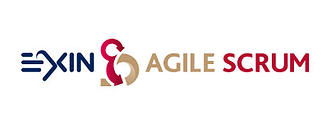 AGILE SCRUM:
AGILE SCRUM:
The flexible and adaptable approach to any project
Modern times and current market demands require flexibility, delivering high quality products, keeping costs low and the time to deliver short. This demands a new approach. The need for such a different approach is why many companies move away from the traditional waterfall methodology to adopt the Agile approach.
Agile development is an approach to managing teams and projects which focuses on continuous improvement, scope flexibility, team input and delivering essential quality products. Scrum is the most well-known and widely adopted Agile method. While Scrum originated as a methodology for software development, the principles are widely applicable and it is increasingly being used in other types of projects. Within Scrum, development takes place in small steps called Sprints. Scrum practices include establishing cross-functional and self-managed teams that produce a working deliverable at the end of each sprint.
Because of the flexible way of working, there is constantly room to adjust the product or to change priorities half way through a project. In the end the project will result in a high-quality product that is closely aligned to the clients’ wishes and expectations. Agile Scrum is different in other respects as well: there are no long or endless meetings and no irrelevant documentation. Agile teams organize themselves and stakeholders are involved in a timely fashion.
The Benefits of Agile Scrum
All stakeholders benefit when using Agile Scrum; the team because of the clearly defined roles, interaction and flexibility. Management because the team runs itself and the members are motivated and committed. The stakeholders because they are constantly up to date. And the product owner because (s)he gets what (s)he ordered.
- Customer satisfaction: Agile Scrum facilitates changing customer requirements. The flexible way of working allows for changing demands and new features. Changes can easily be facilitated, without disrupting the project flow or affecting the team’s morale.
- Transparency: one of the Agile Scrum principles is active ‘user’ and/or product owner involvement. The progress, status, changes are all visible so that it is clear at all times what the end product will be like. This way, expectations are effectively managed.
- High Quality & Low Risk: testing is integrated throughout the project so that any quality issues can be detected and addressed at an early stage. The Sprints are followed by a review which allows the team to reflect on the previous sprint and discuss improvements for the next. This allows for adjustments according to the client’s wishes.

